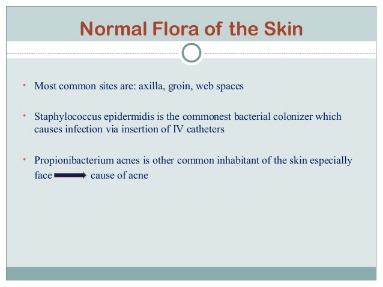
Virulence Elements Of Bacterial And Viral Pathogens
HasA interacts with and delivers heme to the particular outer membrane receptor HasR (Izadi-Pruneyre et al., 2006). HasR can perform the uptake of heme from hemoglobin alone, however the process is one hundred instances more efficient with the participation of HasA (Arnoux et al., 2000). The dedication of the structure of the HasR receptor revealed a cork and a β-barrel group like different heme receptors, with two conserved His residues being essential for heme binding (Izadi-Pruneyre et al., 2006; Krieg et al., 2009). This receptor actively transports heme with the assistance of HasB, a TonB orthologue that features specifically with HasR (Benevides-Matos et al., 2008). After heme switch from HasA to HasR, apo-HasA stays sure to HasR.

It can also play a job within the improvement of intra-abdominal sepsis by E. coli (Freestone et al., 2002) and be a contributing think about biofilm formation on endotracheal tubing throughout ventilator-associated pneumonia brought on by P. aeruginosa (Freestone et al., 2012). Iron acquisition from transferrin and lactoferrin. Mechanisms are shown for the Gram-negative bacterium Neisseria gonorrhoeae through the TbpAB-FbpABC transporter, and for the Gram-constructive bacterium Staphylococcus aureus by way of the SstABCD transporter and catecholamines. For comparison, the uptake of iron that is potentially released from transferrin by the activity of the reductase Fre10 and the permease Ftr1 is also shown for the pathogenic fungus Candida albicans. The ferroxidase that features with Ftr1 isn’t depicted.
Interaction Of Pathogens With The Innate Immune System
For instance, pores and skin commensals were shown to manage the cutaneous inflammatory milieu and tune resident T cell perform . epidermidis has additionally been proven to inhibit inflammation via pattern recognition receptor–mediated cross talk . On the opposite hand, cutaneous immunity has been proven to impression microbial communities . Additional exciting new directions could give attention to the identification of novel treatments and diagnostic and prognostic tools that leverage our information of skin microbial communities. Propionibacterium acnes is a gram-optimistic, oxygen tolerant anaerobe, and some of the frequent skin commensal micro organism.
- Glutathiones have relatively lately been found in micro organism and therefore little is thought about their properties.
- Iron is extracted from these carriers by heme oxygenase in lysosomes or by reductases in endosomes and is used for metabolic processes .
- Antifungal agents are fairly effective in treatment, thus suggesting a fungal element to the disease.
- Figure 15.5 represents knowledge graphed from a hypothetical experiment measuring the LD50 of a pathogen.
- As a outcome, bacterial virulence decreases and bacteria killing by oxidation within the bloodstream will increase.
aureus and other pathogens to degrade and escape webs of extracellular DNA produced by immune system phagocytes to lure the bacteria. As discussed in the earlier part, the first two steps in pathogenesis are exposure and adhesion. Recall that an adhesin is a protein or glycoprotein discovered on the floor of a pathogen that attaches to receptors on the host cell. Adhesins are discovered on bacterial, viral, fungal, and protozoan pathogens. One example of a bacterial adhesin is type 1 fimbrial adhesin, a molecule found on the information of fimbriae of enterotoxigenic E. Recall that fimbriae are hairlike protein bristles on the cell surface.
coli is supported by the receptor IutA and the ABC transporter FhuBCD (De Lorenzo et al., 1986; Wooldridge et al., 1992). This transporter additionally mediates the uptake of ferrichrome, coprogen and rhodotorulic acid with the help of the specific receptors FhuA, FhuE, and Fiu (Fecker and Braun, 1983; Hantke, 1983). This illustrates the flexibility of receptor-substrate recognition and likewise the piracy for iron acquisition that exists among competitive pathogens.
Medical Microbiology 4th Version.
Endotoxin, which largely accumulates in the liver following injection of a sublethal dose by the intravenous route, can be devastating due to its capacity to affect quite a lot of cell and host proteins. Kupffer cells, granulocytes, macrophages, platelets, and lymphocytes all have a cell receptor on their surface known as CD14, which binds endotoxin. Endotoxin binding to the CD14 receptor on macrophages is enhanced by interplay with a host protein made in the liver (i.e., LPS-binding protein). The extent of involvement of each cell type probably depends on the level of endotoxin exposure.
The needle is inserted and a small quantity of fluid is drawn into an attached pattern tube. The tube is eliminated, capped and a prepared label with Michael’s knowledge is affixed to it. This STAT specimen is divided into three separate sterile tubes, every with 1 mL of CSF.
Fibrin is an insoluble, thread-like protein that binds to blood platelets, cross-hyperlinks, and contracts to form a mesh of clumped platelets and purple blood cells. The ensuing clot prevents additional loss of blood from the damaged blood vessels. However, if bacteria launch coagulase into the bloodstream, the fibrinogen-to-fibrin cascade is triggered in the absence of blood vessel injury. The ensuing clot coats the micro organism in fibrin, protecting the bacteria from exposure to phagocytic immune cells circulating in the bloodstream.
Microbes And Infection
A variety of gram-optimistic organisms are capable of causing sepsis. Gram-constructive micro organism, corresponding to Staphylococcus aureus, trigger severe human illnesses via combos of floor virulence factors and secretion of exotoxins. Two of essentially the most generally expressed superantigens , every of which has been associated with important mortality, are staphylococcal enterotoxin B and poisonous shock syndrome toxin–1 (TSST-1) . SAgs are one of the potent toxins produced by micro organism.
Food security is therefore a demanding problem for all parties involved, especially in the area of high quality assurance at main production websites, meals retailing and also for governmental authorities. that enable them to colonize and harm host tissues as they unfold deeper into the physique. Pathogens may also produce virulence components that defend them against immune system defenses. A pathogen’s particular virulence components determine the degree of tissue injury that happens.